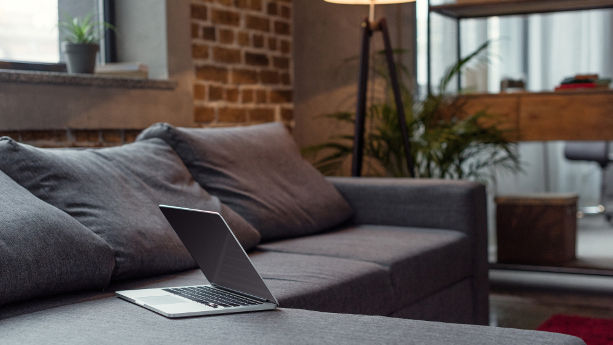
Furniture imported or manufactured in the EU are covered by various flammability standards. Further, the General Product Safety Regulation requires that all furniture sold in the EU are safe for consumers, which in turn ties back to ensuring compliance with relevant European standards.
In this guide, we take a look at the General Product Safety Regulation, EN 1021, EN 597 and other furniture flammability compliance requirements.
Content Overview

FREE CONSULTATION CALL (US, EU & UK)
- Request a free 30-minute call with Ivan Malloci to learn how we can help you with:
- Find product requirements
- Certification and labeling
- Lab testing
General Product Safety Regulation
The General Product Safety Regulation sets safety requirements for consumer products sold in the EU. The regulation covers product categories such as furniture, as well as associated safety risks such as flammability and ignitability. Flames can propagate quickly on furniture, and cause burns, injury, or death. As such, you should ensure your furniture products:
- Comply with relevant standards
- Are accompanied by technical documentation (e.g., test reports and user instructions)
- Are sufficiently labelled, along with their packaging
- Carry the proper warnings
Standards
The General Product Safety Regulation indicates that products are presumed to conform with its requirements if they conform to relevant harmonised standards. However, we could not find any harmonised standards related to furniture flammability.
However, according to Articles 7 and 8, when harmonised EU standards do not exist for your products you should still ensure that your products are safe and conform to:
- National requirements and standards
- Non-harmonised EU standards (e.g. EN standards)
- International standards
We list some examples of EN standards and national standards in this guide.
Documentation
In this section, we list the key documentation requirements for the General Product Safety Regulation.
| Title | Description |
| Technical documentation | Manufacturers should create the technical documentation, which must include:
|
| Instructions | Manufacturers should ensure that the product is accompanied by a set of user instructions and safety information. |
| Test reports | Manufacturers should provide test reports as part of the mandated technical documentation. |
Labelling requirements
The regulation requires manufacturers to include traceability information, warnings, and instructions on the product’s labels. We summarise those requirements below.
| Title | Description |
| Traceability | Manufacturers should include the following traceability information:
They should place this information on the product itself, or when the product’s size does not allow this, on the packaging or an accompanying document. |
| Warnings | Manufacturers should include age suitability and other warning labels on products covered by the General Product Safety Regulation. |
| Instructions | Manufacturers should include instructions for the product’s safe use and disposal on the product, its packaging, or an accompanying document. |
EN Standards
In this section, we list several EN standards that are relevant to furniture flammability and briefly explain what they cover and what test methods they set. Note that these are only examples, as other standards may exist.
EN 1021-1: Upholstered furniture – Ignition source smouldering cigarette
This standard covers upholstered seating furniture. Specifically, it sets methods for testing the ignitability of combined materials used in upholstered seating by using a smouldering cigarette as the ignition source.
EN 1021-2: Upholstered furniture – Ignition source match flame equivalent
This standard covers upholstered seating products. It sets a method of testing the ignitability of combined materials. The method uses a small flame as an ignition source.
EN 597-1: Mattresses and upholstered bed bases – Ignition source smouldering cigarette
This standard covers mattresses, upholstered bed bases, and mattress pads. It does not cover air mattresses and water beds.
It sets methods for testing the ignitability of those products using a smouldering cigarette.
EN 597-2: Mattresses and upholstered bed bases – Ignition source match flame equivalent
This standard covers the same products as EN 597-1. However, EN 597-2 requires the use of a gas flame to test the ignitability of those products.
National Standards
Here we list several national flammability safety standards in the EU that can be used to test the flammability of furniture. Note that these are just examples of standards, as more national standards may exist.
| Standard – Country | Description |
| DIN 66084 – Germany | This standard concerns the classification of the burning behaviour of upholstered compounds. It provides a test procedure, information on sample preparation, and more. |
| UNI 9175 – Italy | This standard sets test methods and classification requirements for upholstered products.
The tests are executed by applying a small flame to the product. |
| NF P 92-507 – France | This standard sets flammibility requirements for interior fitting materials, and it classifies them according to how they react to the fire.
According to some sources, such as Eurolab, it also applies to furniture. |
Lab Testing
You should ensure that your furniture undergoes lab testing to prove that it complies with safety standards and requirements. Passing flammability safety tests is crucial to prevent burns, injuries, and potential recalls or fines.
In general, flammability safety standards evaluate how slowly a product can spread flames, even though the specific methods may vary among standards. Passing fire tests means your furniture resists catching fire easily. If the product passes the test, you receive a test report proving product compliance.
Here we explain how some of the standards can test the ignitability of various furniture products and materials.
| Standard | Lab testing |
| EN 1021-1 | This standard sets testing methods for the ignitability of combined materials in upholstered seating using a smouldering cigarette. |
| EN 1021-2 | This standard sets testing methods for the ignitability of the same products covered by EN 1021-1 using a small flame. |
| EN 597-1 | This standard sets testing methods for the ignitability of mattresses, upholstered bed bases, or mattress pads by subjecting them to a smouldering cigarette. |
| EN 597-2 | This standard sets testing methods for the ignitability of the same products covered by EN 587-1 by subjecting them to a gas flame. |
Furniture testing companies
There are several companies that claim to be able to test furniture to the standards mentioned above.
- Intertek
- Eurofins
- QIMA
- UL Solutions
- TÜV NORD
- Crepim
Compliance Risks
Furniture covers, foam, and other materials manufactured outside the EU are not by default compliant with European flammability standards. In fact, there are plenty of furniture manufactured in China, Vietnam, and other countries – made either for other export markets or domestic use – that don’t comply with EU flammability rules.
We recommend that you follow these steps when importing furniture products to the EU:
- Confirm all applicable EN standards and national rules
- Inform your supplier of all relevant EN standards and national rules
- Book lab testing before mass production to verify flammability compliance
















 Create compliance checklists for your product (US, EU & UK)
Create compliance checklists for your product (US, EU & UK) 20+ product certificate templates
20+ product certificate templates Create label files
Create label files Book product testing
Book product testing
Hi
Would you know if Class UNO 1 IM is the same as Crib 3 compliance ?
Hi There I would like to import foam bed bumpers to the UK using BS5282.
I notice other sellers based in EU and US don’t seem to be producing to this standard but instead their own countries standards,
Could you please tell me the EU and US equivalent of BS5282 for foam products for foam products and as a UK importer is BS5282 my only option.
Many thanks for your assistance.
Hi John,
I can’t imagine that the BS standards is completely different compared to the corresponding EN standard but there could be some differences. I suggest you contact a lab.